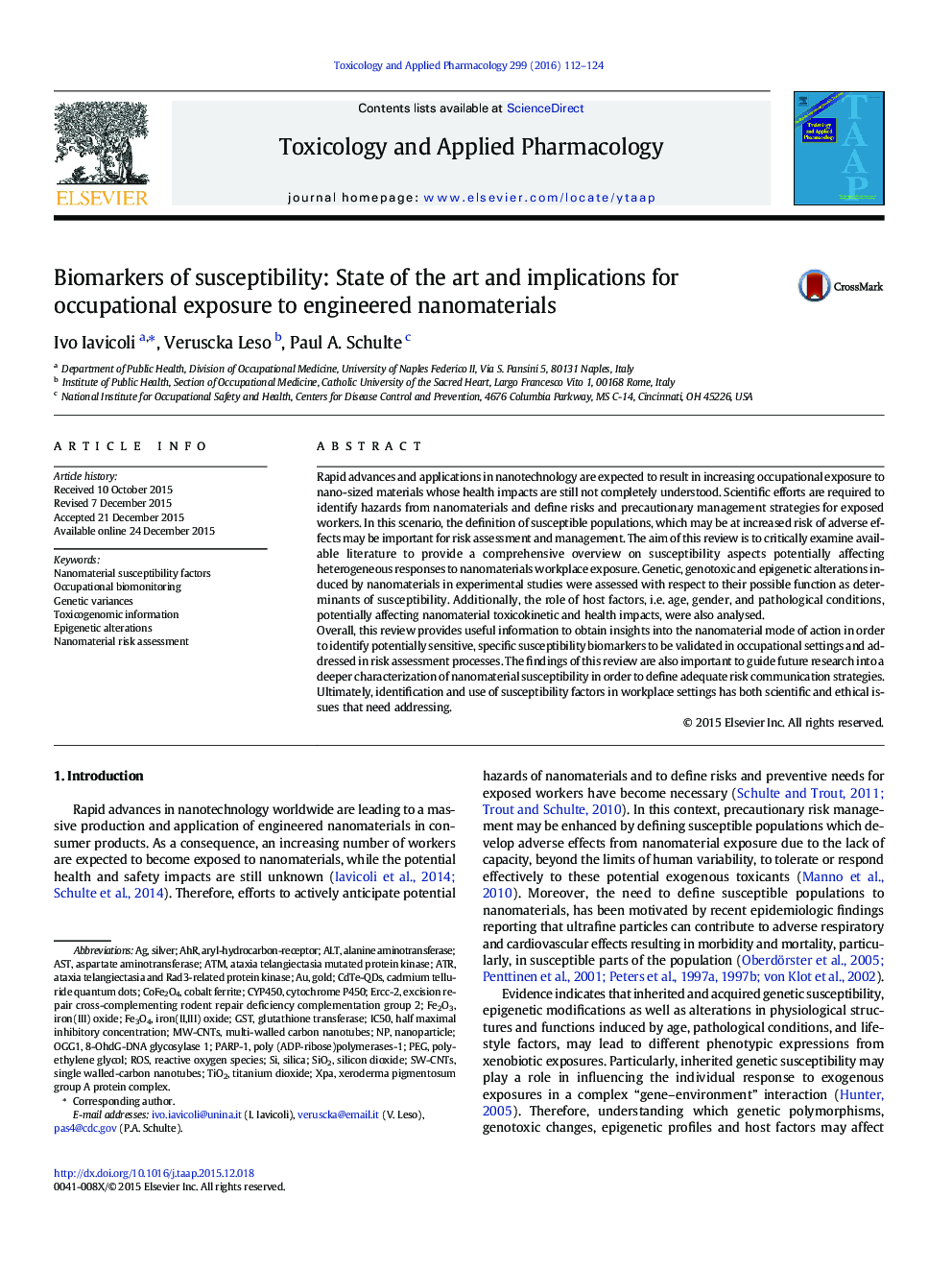| Article ID | Journal | Published Year | Pages | File Type |
|---|---|---|---|---|
| 2568125 | Toxicology and Applied Pharmacology | 2016 | 13 Pages |
•To define susceptible populations is important for risk assessment and management;•Genetic susceptibility may influence the individual response to nanomaterial exposure;•Susceptibility factors in workplace settings have both scientific and ethical issues.
Rapid advances and applications in nanotechnology are expected to result in increasing occupational exposure to nano-sized materials whose health impacts are still not completely understood. Scientific efforts are required to identify hazards from nanomaterials and define risks and precautionary management strategies for exposed workers. In this scenario, the definition of susceptible populations, which may be at increased risk of adverse effects may be important for risk assessment and management. The aim of this review is to critically examine available literature to provide a comprehensive overview on susceptibility aspects potentially affecting heterogeneous responses to nanomaterials workplace exposure. Genetic, genotoxic and epigenetic alterations induced by nanomaterials in experimental studies were assessed with respect to their possible function as determinants of susceptibility. Additionally, the role of host factors, i.e. age, gender, and pathological conditions, potentially affecting nanomaterial toxicokinetic and health impacts, were also analysed.Overall, this review provides useful information to obtain insights into the nanomaterial mode of action in order to identify potentially sensitive, specific susceptibility biomarkers to be validated in occupational settings and addressed in risk assessment processes. The findings of this review are also important to guide future research into a deeper characterization of nanomaterial susceptibility in order to define adequate risk communication strategies. Ultimately, identification and use of susceptibility factors in workplace settings has both scientific and ethical issues that need addressing.
